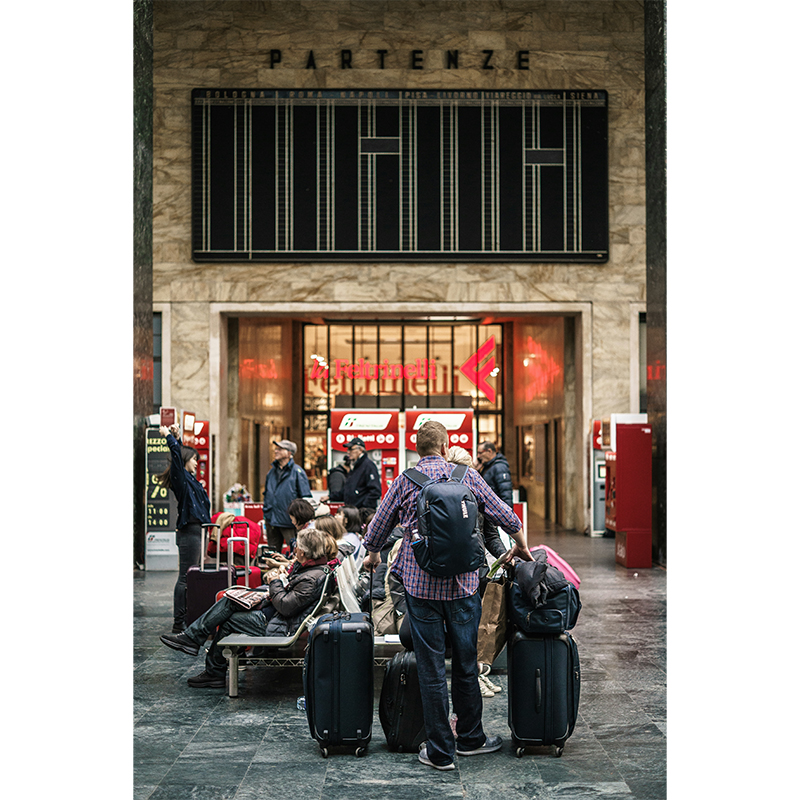Size, Trends, Forecast and Popular Suitcase Styles
Market Size and Growth Outlook
The German luggage market is one of the largest in Europe. According to available industry reports, the overall European luggage market reached USD 12.09 billion in 2024, with an expected CAGR of 7.2% through 2030. Germany typically accounts for 20–30% of the European share, which places the domestic market at approximately USD 2.4–3.6 billion in 2024.
A key niche is smart luggage, valued at USD 197.3 million in 2024 in Germany, projected to reach USD 562.3 million by 2030 with a CAGR of 19.1%. This reflects the rapid growth of technology-driven features such as GPS tracking, USB charging, and digital locks.
Based on travel recovery, e-commerce growth, and sustainable product demand, the German luggage market is expected to expand at a 5–7% CAGR from 2025 to 2030.
Demand Drivers (2025)
Travel Recovery: Passenger traffic in German airports grew +2.3% in the first half of 2025, slower than the European average (+4.5%) but still positive. Tourism overnight stays are close to pre-pandemic levels, supporting suitcase demand.
E-commerce Growth: German online retail rebounded in 2024 (+1.1%) and is expected to grow +2.5–4% in 2025, with Amazon.de, Zalando, and OTTO dominating the luggage category.
Sustainability Preference: German consumers are highly sensitive to environmental issues, favoring luggage made with rPET linings, fluorine-free coatings, and replaceable components.
Popular Suitcase Types and Styles
Hard-shell dominates: Polycarbonate (PC) and polypropylene (PP) lightweight hard-shell suitcases remain the mainstream, favored for durability and clean design. Aluminum-frame models (e.g., Rimowa style) continue to lead in the luxury segment.
Soft-shell revival: Fabric suitcases are regaining popularity for their flexibility and expandability, especially in short trips and car travel, provided they use water-repellent and sustainable fabrics.
Size trends:
20” carry-on + 24/25” medium two-piece sets remain the best sellers.
Under-seat personal items (≈40×30×15 cm) are gaining traction, especially with ongoing EU discussions on harmonized free cabin baggage rules.
Functional features: Replaceable 360° silent wheels, reinforced handles, anti-theft zippers, and eco-friendly linings are increasingly standard.
Pricing Segments
Entry-level (online bestsellers): €69–129 single suitcase / €119–199 two-piece set.
Mid-range (department stores & e-commerce): €149–299.
Premium/luxury: €500+ (aluminum frame, designer collaborations, iconic German brands).
Channels and Brands
Online platforms: Amazon.de, Zalando, and OTTO dominate online sales.
Key brands: Rimowa, Samsonite, TUMI at the premium end; Titan, Stratic, Hauptstadtkoffer as domestic mid-range favorites.
Consumer messaging: Keywords such as lightweight (leicht), durable (langlebig), repairable (reparierbar), eco-friendly (umweltfreundlich), fluorine-free water-repellent (PFC-frei) resonate strongly with German buyers.
Compliance and Regulation
General Product Safety Regulation (GPSR): Effective December 2024, requiring EU-based economic operators, technical documentation, and clear labeling.
PFAS restrictions: Expected by 2026, fluorinated water-repellent coatings must be replaced by fluorine-free alternatives.
Digital Product Passport (DPP): Luggage with textile components may be included in the 2025–2027 rollout, requiring brands to prepare data on recycled content and repairability.
Forecast 2026–2030
Volume drivers: Lightweight hard-shell PC/PP sets and under-seat cabin bags.
Premium growth: Aluminum-frame and co-branded special editions.
Smart luggage: Expected double-digit growth driven by tech-savvy consumers.
Overall CAGR: 5–7% growth, with sustainable and smart features outperforming the market average.
Post time: Sep-19-2025
